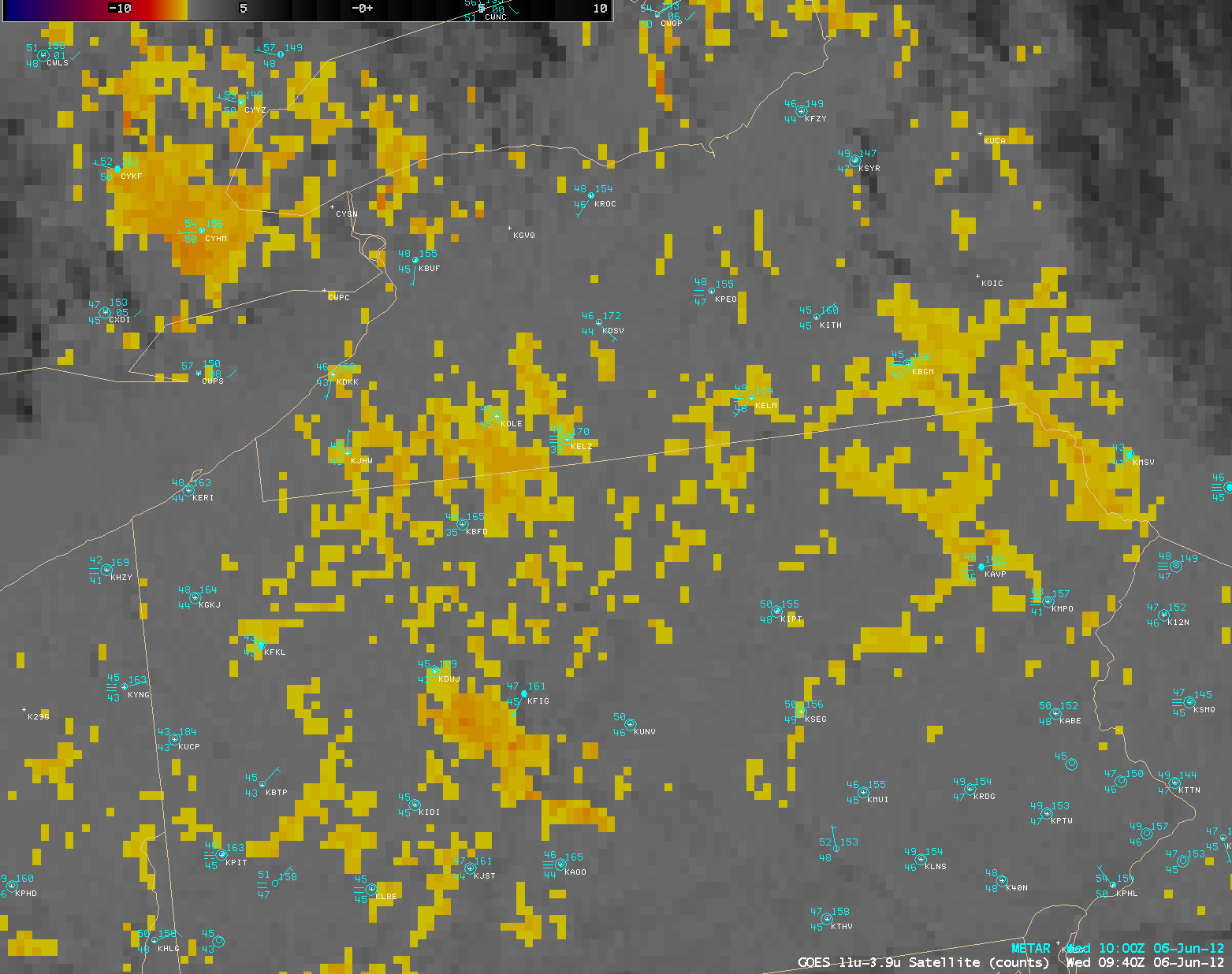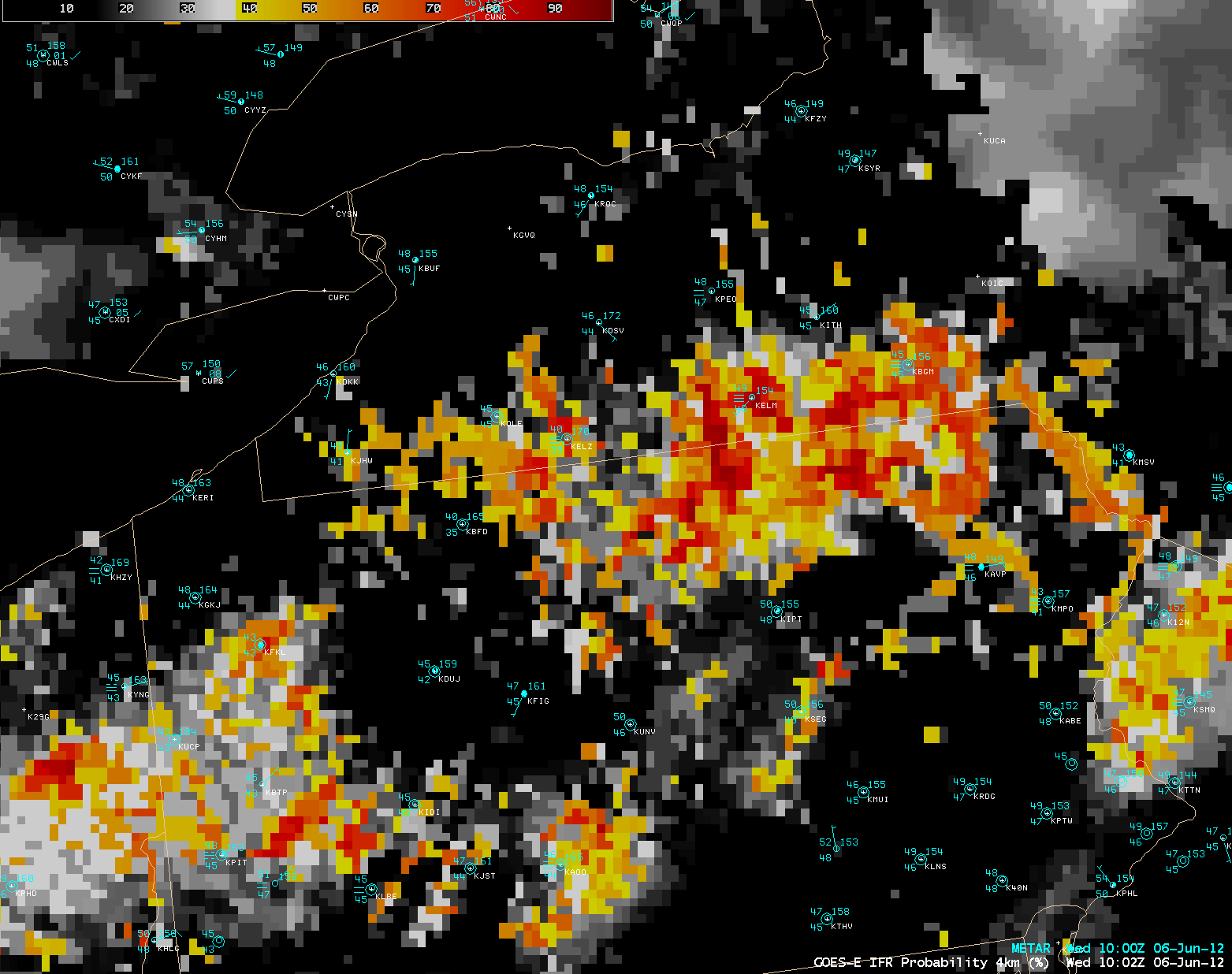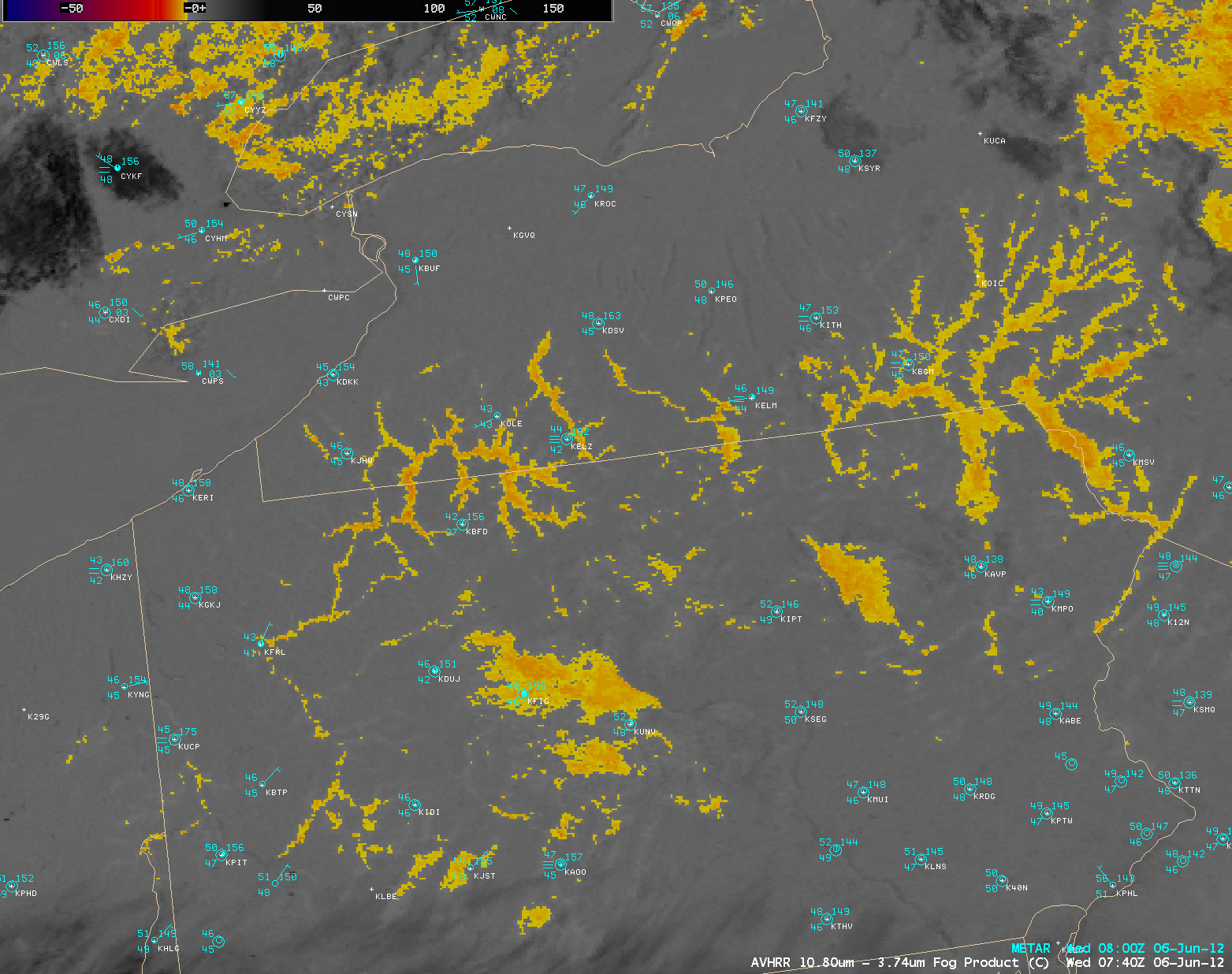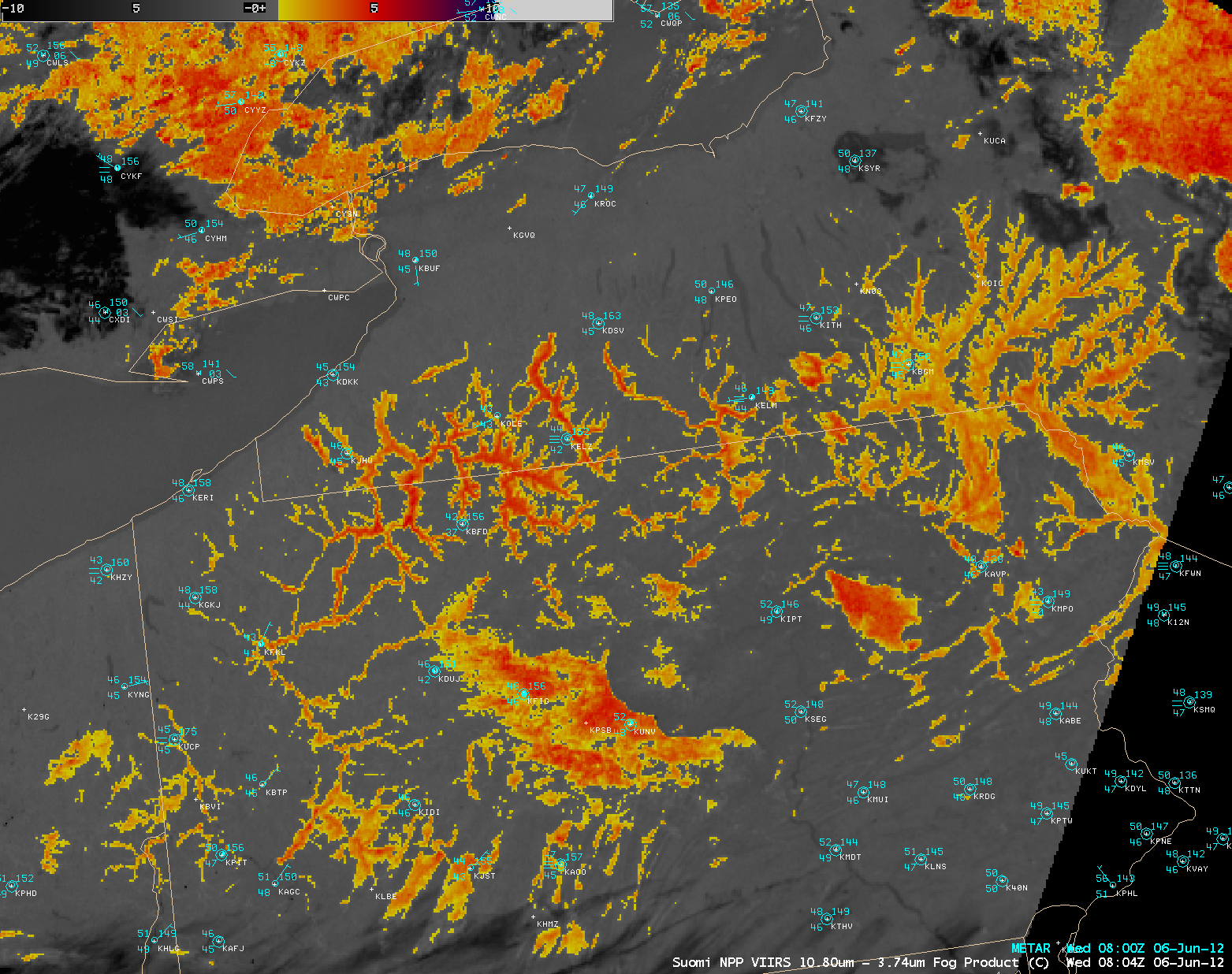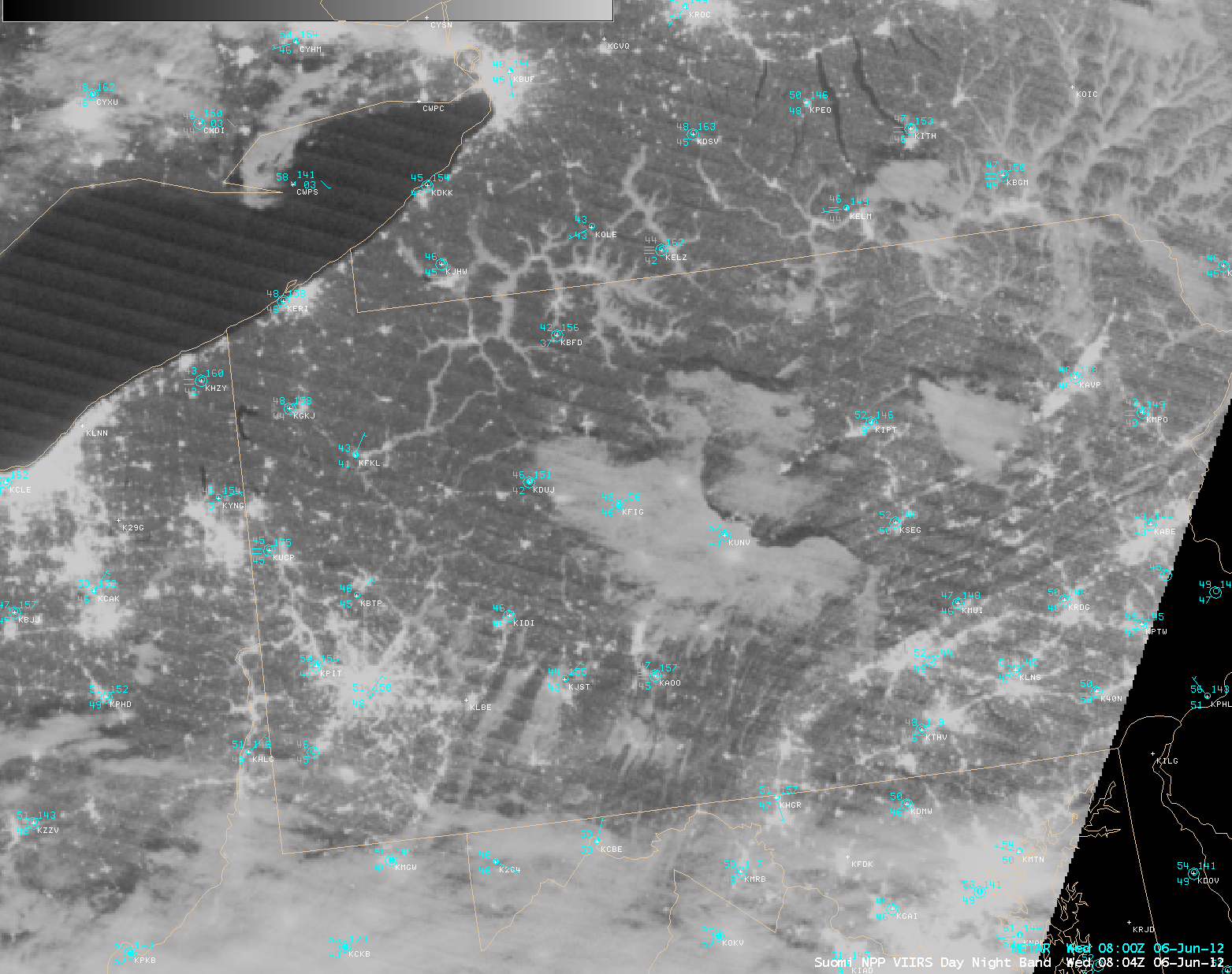Valley fog in the Allegheny Plateau region of the northeastern US
AWIPS images of the 4-km resolution GOES-13 11-3.9 µm brightness temperature difference (BTD) or “legacy fog/stratus product” (above; click image to play animation) began to display a signal of increasing coverage of fog and/or stratus across parts of the Allegheny Plateau region of New York and Pennsylvania during the pre-dawn hours of 06 June 2012. Strong nocturnal radiational cooling — Bradford, Pennsylvania (station identifier KBFD) dropped to an overnight low temperature of 37 F — was helping to promote the formation of valley fog.
A more quantitative alternative to the legacy BTD “fog/stratus product” is a new GOES Instrument Flight Rules (IFR) Probability product, developed as part of ASPB/CIMSS participation in the GOES-R Proving Ground. Note that the legacy fog/stratus product cannot make the distinction between fog and elevated stratus features (such as those found northwest of Lake Ontario, and also in west central Pennsylvania) — but the IFR Probability product does accurately make this discrimination. A trend of increasing areal coverage and magnitude of IFR Probability was noted (below; click image to play animation), especially along the New York/Pennsylvania border region where locations across southern New York such as Wellville (station identifier KELZ), Elmira (station identifier KELM), and Binghamton (station identifier KBGM) had surface visibilities drop to 1/4 mile and cloud ceilings drop to 100-200 feet above ground level.
A comparison of 4-km resolution GOES-13 and the corresponding 1-km resolution POES AVHRR “fog/stratus product” images at 07:40 UTC or 3:40 AM local time (below) demonstrated the importance of improved spatial resolution for the detection of small-scale features such as valley fog.
Similarly, a comparison of 4-km resolution GOES-13 and the corresponding 375-meter resolution (projected onto a 1-km resolution AWIPS grid) “fog/stratus product” images just after 08:00 UTC or 4:00 AM local time (below) showed much greater detail associated with the narrow fingers of valley fog.
In addition, comparing the Suomi NPP VIIRS “fog/stratus product” with the VIIRS 0.7 µm Day/Night Band (DNB) image at that same time (below) showed that the DNB channel could detect a few of the narrow fingers of valley fog in far southwestern Pennsylvania and far northern Maryland that were obscured by high cirrus clouds (black features) on the “fog/stratus product” image. During periods of strong illumination from moonlight (as was the case on 06 June), the DNB can serve as a form of night-time visible channel imagery.
After sunrise, McIDAS images of GOES-13 0.63 µm visible channel data (below; click image to play animation) showed the widespread valley fog features across parts of New York and Pennsylvania, which subsequently dissipated with daytime heating and boundary layer mixing.


